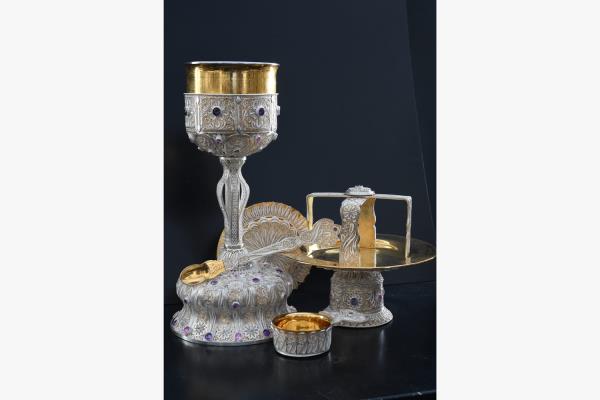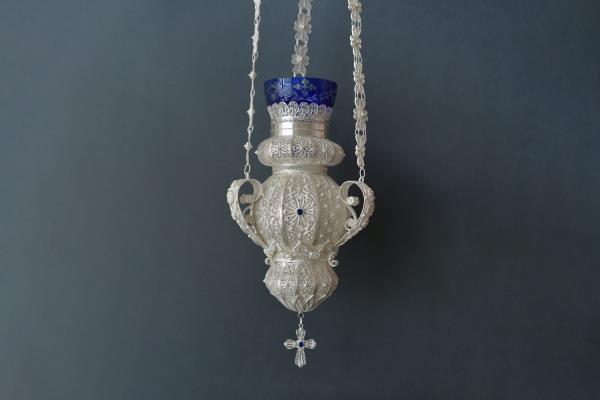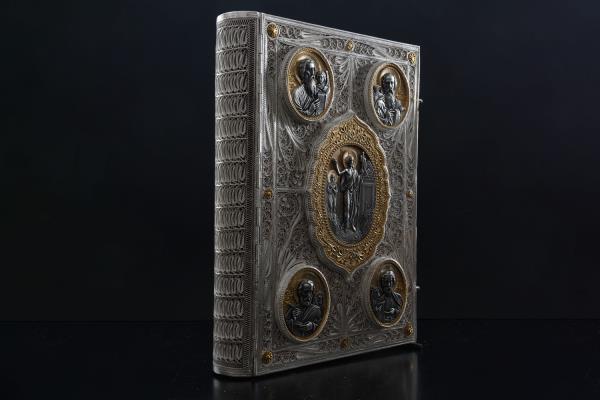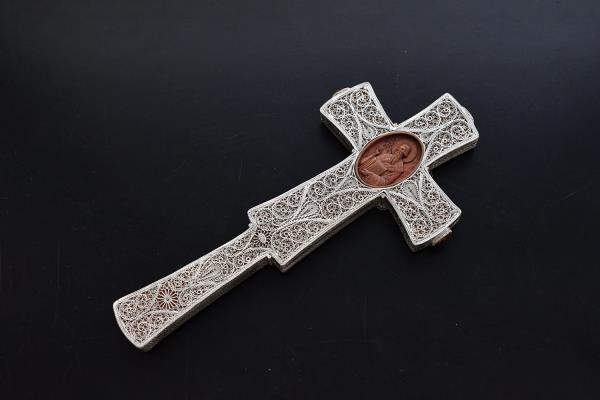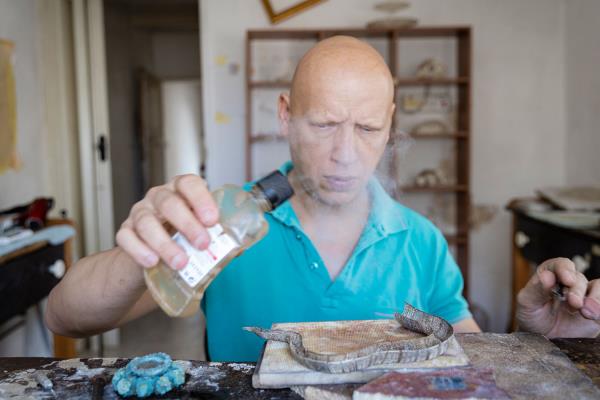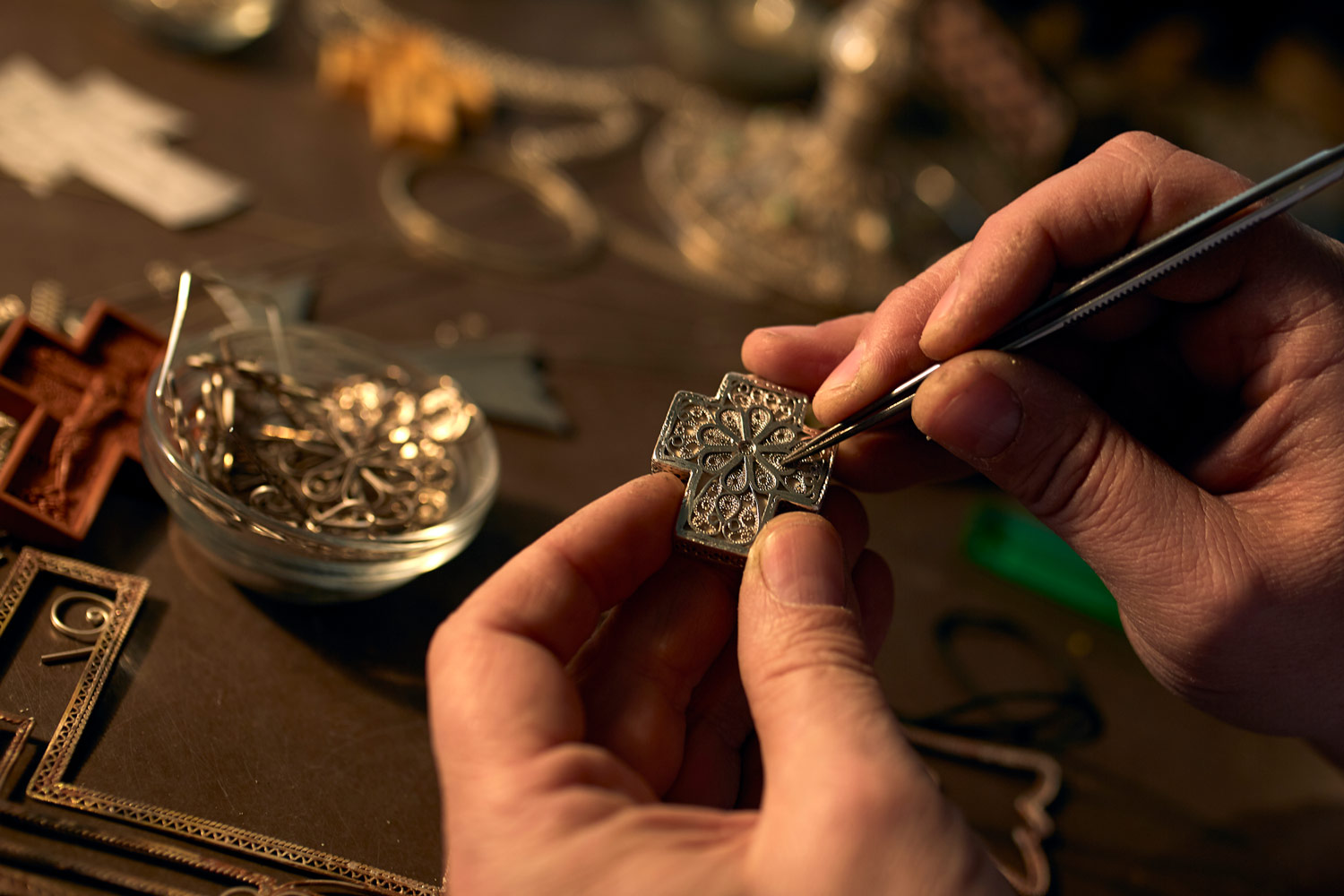
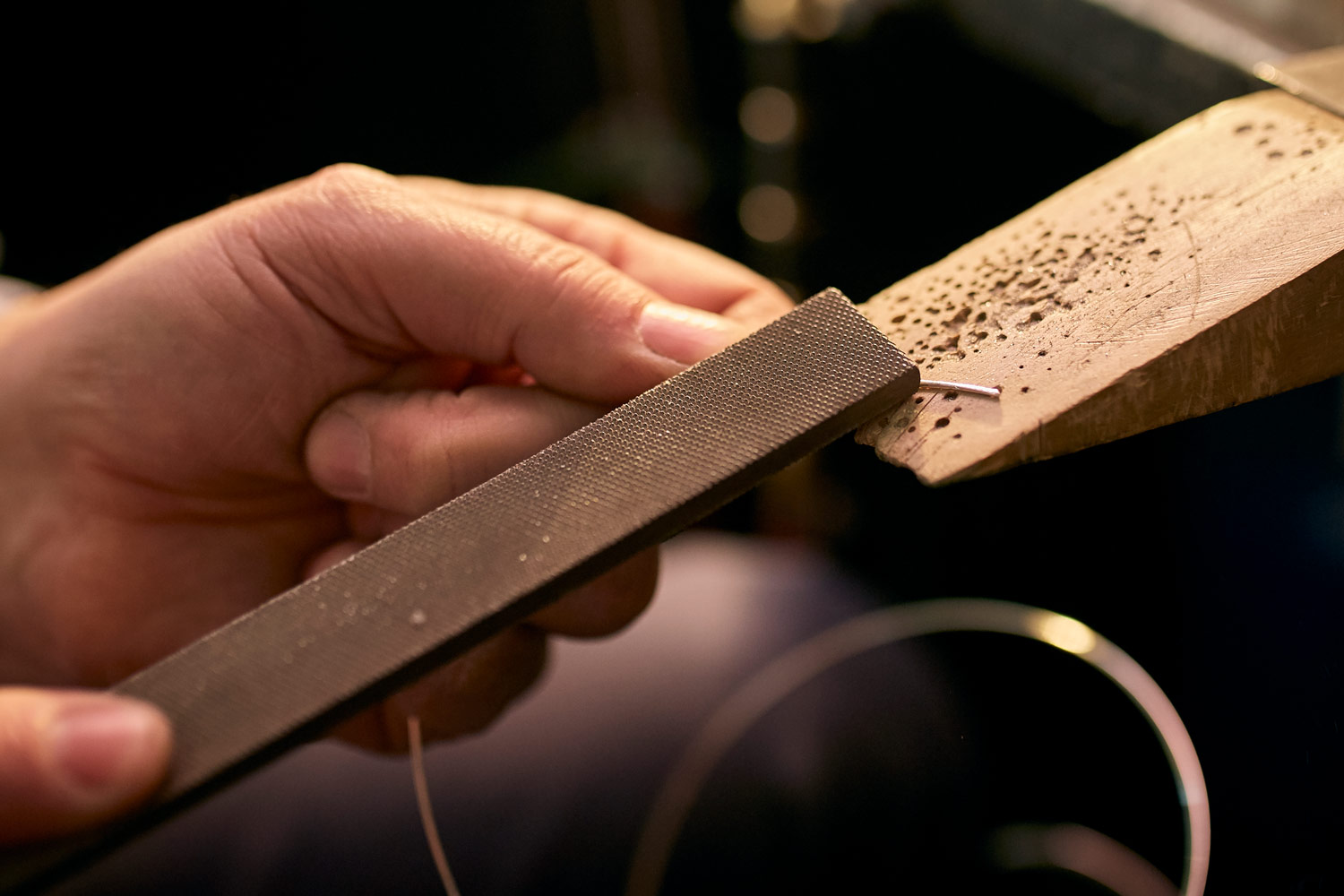
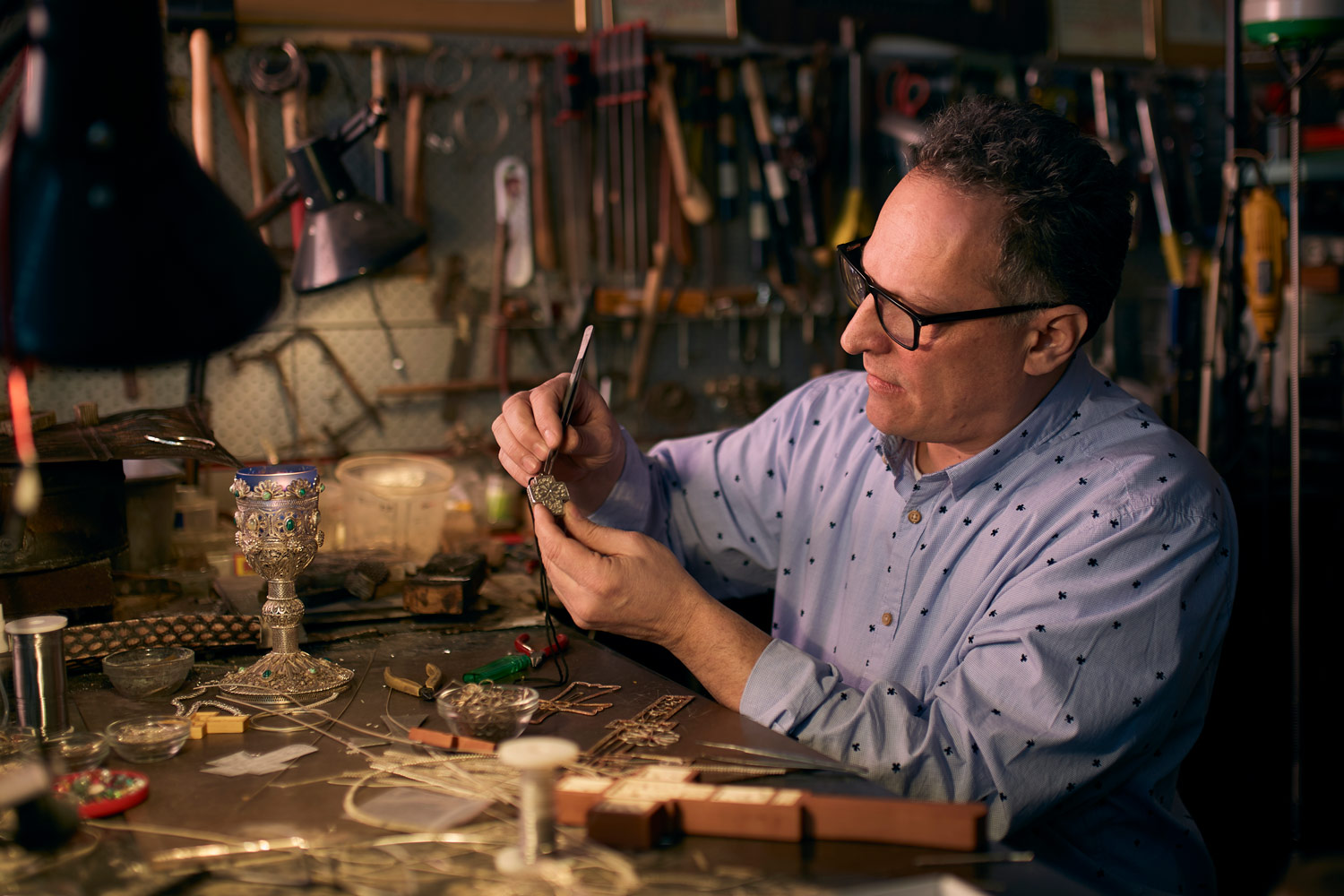
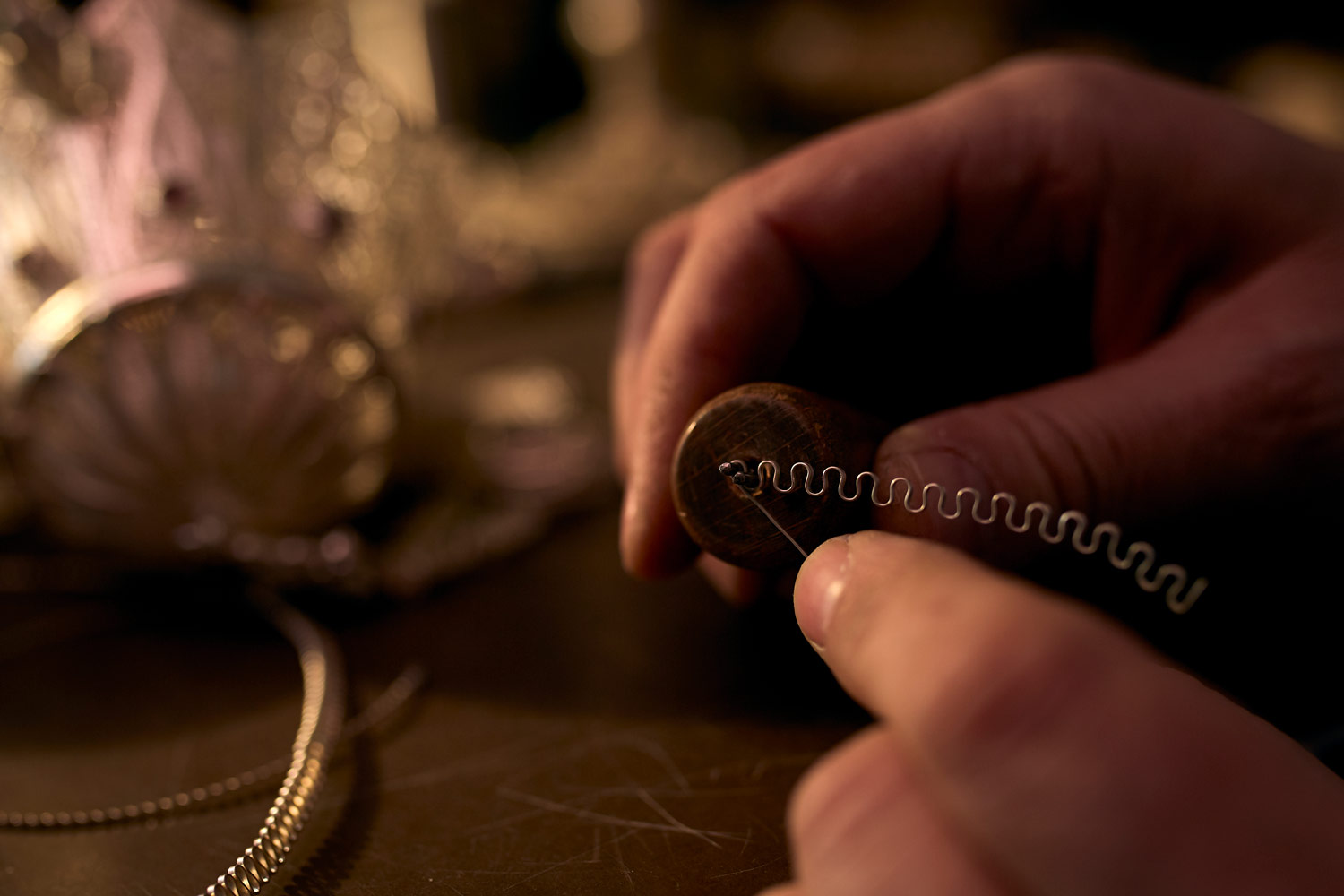
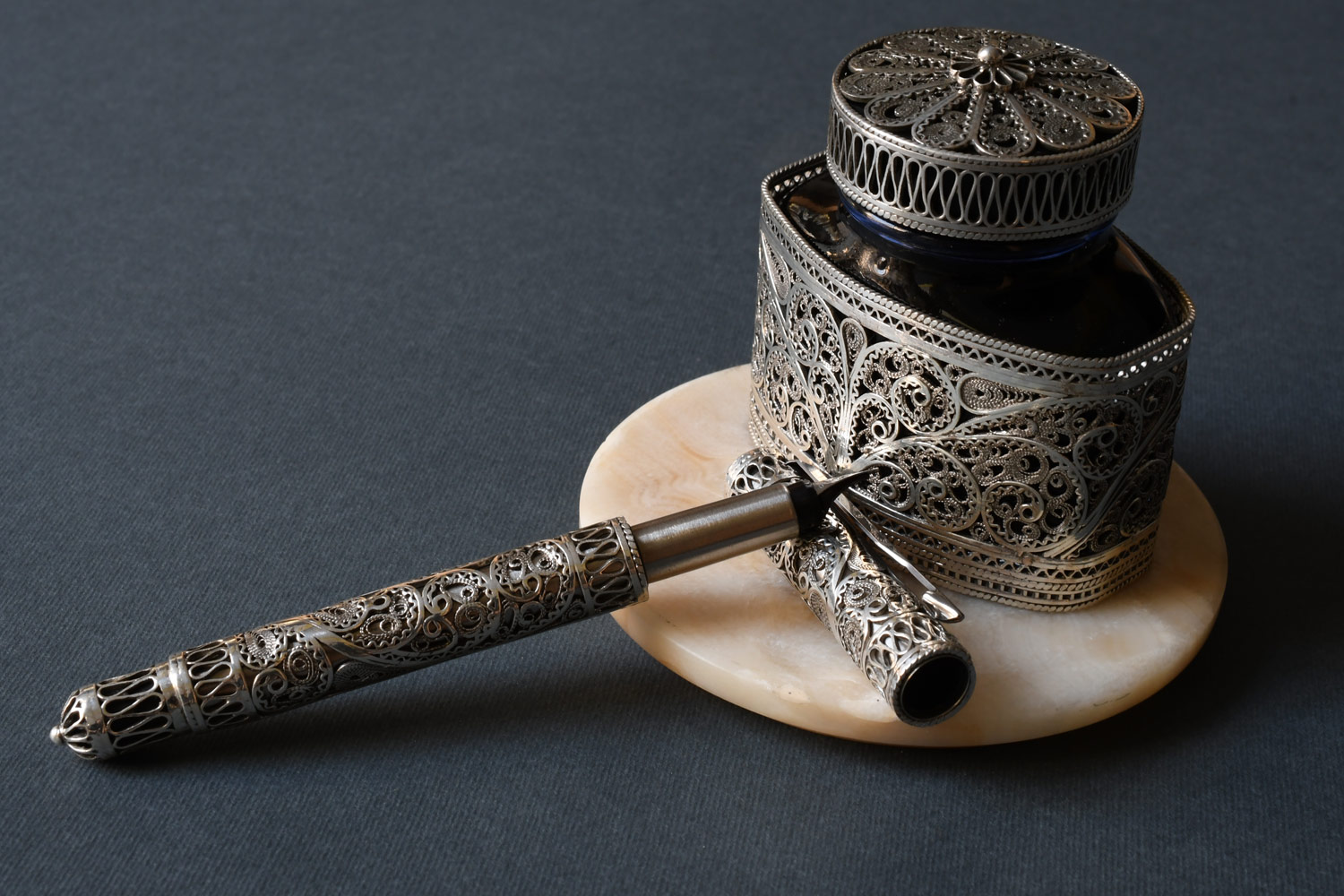





Filigree for devotion
- Goran was taught by a master and now trains as one
- He uses the filigree to make ecclesiastical objects
- He is eager to help to preserve the Serbian heritage tied up in this craft
Goran Ristovic Pokimica sees himself as a guardian of an ancient craft and it’s easy to see why. He became enchanted by the craft on his visits to the filigree workshop of his father-in-law. This deep appreciation of the mastery and craftsmanship involved increased his appreciation of the minutely made filigree objects at a Serbian Orthodox monastery. With a master artisan in-law to teach him the essentials, he started to learn. Training in Majdanpek jewellery factory and eventually leaving his managerial job in order to open his own workshop. Today, Goran is a master, specialised in making objects for ecclesiastical use, inspired by monasteries and museum depots. Working out of his Kraljevo studio, he continues to train one apprentice at a time. He has kept the first object he ever made – a small pendant – as a memento.
Interview
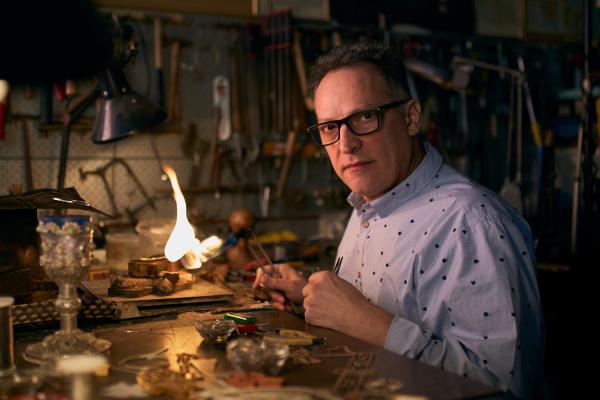
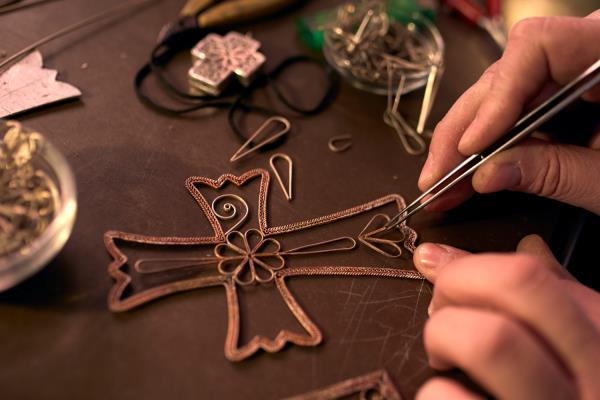
- How do you know when an object is complete?
- Every single object is carefully planned and designed prior to the manual work beginning. The object has to be made without any technical flaws and imperfections, but it is well made if the design and overall impression of the piece is eye-catching.
- How is your craft connected to Serbia?
- It mostly relates to Southern Serbia. It was highly respected back then in the courts of Serbian noblemen and in the Serbian Orthodox Church. In modern times, this technique is mostly used for jewellery, but I have chosen to manufacture primarily church utensils and other objects of applied art.
- How do tradition and innovation show in your work?
- By respecting traditional forms and the technique itself. I try to modernise the appearance and shape of filigree objects by experimenting and combining various techniques such as engraving, stone setting, granulation and chasing of silver to give them a more modern look.
- Is filigree endangered as a craft?
- Yes, silver filigree craft is generally in danger worldwide due to the shift in taste of contemporary jewellery. It’s considered somewhat outdated. Unable to sell, lots of shops closed and apprentices vanished. However, cultural institutions in Serbia recognised the importance to preserve this old craft and help organise masterclasses and workshops. Fortunately, there’s more and more interest.
Goran Ristovic Pokimica is a master artisan: he began his career in 2002 and he started teaching in 2018
Works
Where
Goran Ristovic Pokimica

